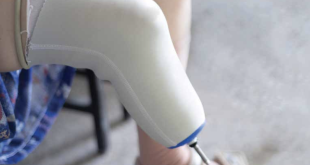What is bromohidrosis?
We have two types of sweat glands: apocrine and eccrine. Apocrine glands are located in the groin, breast, and underarms, while eccrine glands are found all over the body. Both apocrine and eccrine sweat are odorless and colorless when produced.
Our skin is home to millions of bacteria, virus, and fungi. When these bacteria get mixed with the protein in the sweat, it produces the odor that is termed as regular body odor. But, in a few cases, the body odor is totally different from the regular one, as it is extremely offensive—like that of onions or sulfur; this condition is termed as bromhidrosis. Thus, bromhidrosis is a chronic medical condition characterized by an extreme offensive body odor.
What are the types of bromhidrosis?
The most common type is apocrine bromhidrosis; the sweat from these glands is thicker than that produced by the eccrine glands. With puberty, apocrine glands become active, thus body odor becomes prominent. Apocrine sweat contains a chemical known as pheromones, which primarily function to attract others. For example, to attract a mate, humans and animals release this chemical. The smelly armpits are the result when the sweat from these glands in the underarms gets mixed with the skin commensals.
The next type is eccrine bromhidrosis, which is not as common as that of the apocrine type. Eccrine sweat contains a mild salty solution. When the bacteria get mixed with the sweat and starts breaking it down, it results in bromhidrosis. The smell of eccrine sweat can also reflect certain foods that we have eaten, such as garlic or alcohol, or even certain medications.
What are the causes of bromhidrosis?
Factors that can cause or exacerbate bromhidrosis include genetics, consumption of certain foods, and some medical conditions. Bromhidrosis can run in the family, recent studies have shown that there is a strong correlation with the ABCC11 gene.
Medical conditions like obesity, diabetes, intertrigo, erythrasma, and hyperhidrosis can exacerbate bromhidrosis. Excess fat in obesity creates skin folds, and the warm, dark cervices thus created are challenging areas to keep clean, thus becoming the perfect environment for sweat and bacteria to mix. The bad breath resulting from diabetic ketoacidosis, secondary to uncontrolled diabetes, is mistaken for bromhidrosis. Intertrigo is a skin rash caused by the trapped moisture and sweat, and the neglected intertrigo becomes home for the bacteria, causing pervasive body odor. Erythrasma, manifested as a skin rash, is a bacterial infection caused by humid, tropical climates, and the bacteria causing it is Corynebacterium, which is one of the main bacteria causing bromhidrosis. Hyperhidrosis is a condition where there is excessive sweating, thus it is a prone condition causing bromhidrosis.
Some of the foods and oral medications that we eat can affect the smell of our sweat. The byproducts of pungent foods like garlic, onion, cruciferous vegetables, and red meat blend with the sweat and bacteria, causing chronic body odor. Similarly, alcohol, tobacco, fish, asparagus, and curry can aggravate bromhidrosis, which can be manifested as a side effect of medications like penicillin and bromides.
Who gets bromhidrosis?
All age groups, races, and both genders can be affected, though a male preponderance has been noted. Adults are commonly mre affected than children, as the apocrine glands become active after puberty. People residing in hot humid tropical climates are more affected and as it is genetically, Europeans and Africans are more commonly affected than Asians.
How to diagnose bromhidrosis?
Regular body odor is easy to keep under control naturally, such as by taking a shower or using deodorants and antiperspirants, but these solutions won’t work for bromhidrosis.
Common symptoms that help to diagnose bromhidrosis:
a. Constant, but not overpowering, body odor
b. Body odor within half an hour of showering or bathing
c. An onion or garlic-like smell
d. A cheese or meat-like smell
Clinically, we can diagnose bromhidrosis by taking a swab and culturing the bacteria. Excessive amounts of Corynebacteriumm, Propionibacterium, Staphylococcus, and Micrococcus usually indicate chronic body odor. Among these bacteria, Staphylococcus is the strongest-smelling bacteria.
What is the differential diagnosis for bromhidrosis?
The conditions that need to be ruled out are: body dysmorphophobia, olfactory hallucinations, and olfactory refractory syndrome (fear of having offensive body odor).
What are the complications of bromhidrosis?
It can have a significant impact on quality of life, causing anxiety, low self-esteem, and social withdrawal.
What are the treatments of bromhidrosis?
General and specific measures can be taken to reduce the number of bacteria residing on our skin so as to decrease or eliminate body odor.
The general measures are:
a. Maintaining good hygiene with regular washing, use of deodorants and antiperspirants, and removal of sweaty clothing
b. Hair removal by shaving and electrolysis
c. Use of topical antiseptics
d. Exfoliation of areas of keratin degradation
The specific measures are:
a. Avoidance of odor-causing foods and medications
b. Treatment of skin infections
c. Treatment of hyperhidrosis
d. Removal of nasal foreign body
e. Dietary modification for metabolic disorders
f. Removal of apocrine glands: LASER, surgical excision, microwave-induced fibrosis, and liposuction curettage.
Concluding words as a plastic surgeon
Quality of life can be enhanced by implementing the general measures of the treatment. Above that lies the specific measures that can be added to overcome the social-withdrawal causing factors.
Surgically, whole of the hair-bearing area of the axilla can be excised to get rid of the chronic condition, but it may seem extensive. Don’t worry, new modalities of treatment are already in practice, with promising results. LASER can be used to decrease the number of hair follicles. This technique might need more than one setting, but the less invasive method that can cure in one setting is liposuction curettage. A small stab wound for inserting the liposuction cannula with the rasp can easily remove the hairs with very few complications.
General or specific measures can be taken to treat bromhidrosis; however, not all cases can be completely cured.
 Medicosnext
Medicosnext




